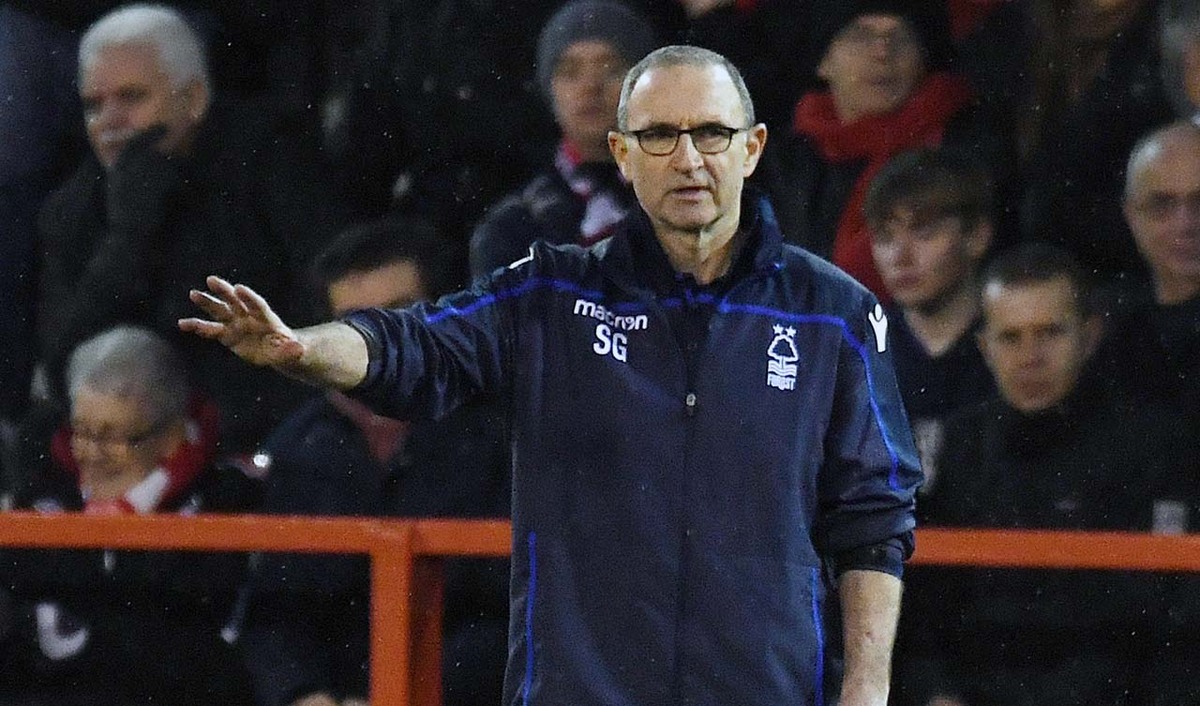




OUR BEST EVER OFFER - SAVE £100/$100
JOIN THE WORLD'S LEADING PROFESSIONAL DEVELOPMENT PROGRAMME
- 12 months membership of Elite Soccer
- Print copy of Elite Player & Coach Development
- Print copy of The Training Ground
You are viewing 1 of your 1 free articles
1v1s through the middle
This session is about a face-on 1v1 that develops centrally. It is a session designed for strikers, with the end result hopefully being a shot on goal.
| Area | Half pitch |
| Equipment | Balls, cones, mannequins (or poles), goals |
| No. of Players | 4 |
| Session Time | 1v1 practice 15mins, Progression 10mins, Game 12mins |
This session is about a face-on 1v1 that develops centrally. It is a session designed for strikers, with the end result hopefully being a shot on goal. The 1v1s are designed to improve players’ attacking processes in match situations, as well as helping to prolong sub-maximal activity – this is an exercise that does not exceed 90% of a player’s maximum heart rate.
We run this session regularly because 1v1s in the final third are one of the most valuable attacking outlets in the game, and in matches can often be the difference between winning and not winning.
What do I get the players to do?
The 1v1 is played out on a half-pitch – set up as shown in the diagram.
The forward starts at the halfway line, dribbles around the cones, then drives towards the mannequin at pace. He plays a wall pass with the coach, and drives around the other side of the mannequin to receive the ball back. As soon as the coach touches the ball, the defender becomes active and attempts to close down the forward. This creates a 1v1 at pace, where the attacker is encouraged to be positive, attack his man, and fire a shot at goal (1).
1
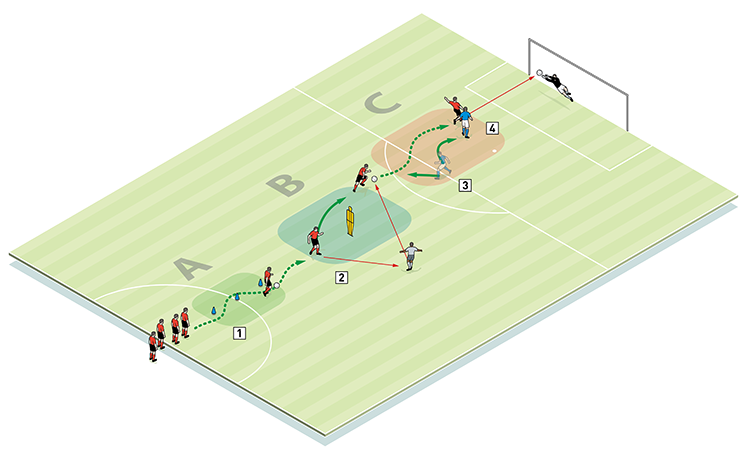
2. At the mannequin he makes a quick wall pass with the coach
3. As soon as the coach touches the ball the defender becomes live
4. Still at pace, the attacker moves into the 1v1, performs a trick to get past the defender, and shoots at goal
What are the key things to look out for?
The idea is to create 1v1s at pace so that everything is game realistic. Having negotiated the chicane, forwards have to pay particular attention in making a well communicated wall pass with the coach (2).
2
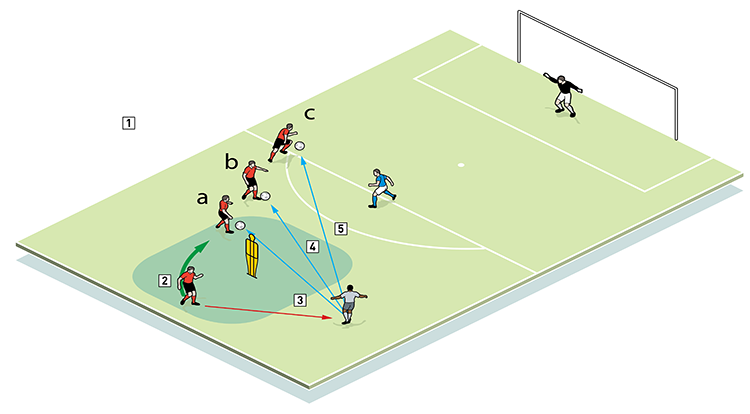
2. The attacker must instruct then react quickly to the weight of the return pass
3. A short pass gives the attacker space to use a trick to beat the defender
4. A medium, weighted pass gives the attacker options to beat the defender on either side
5. A long pass allows the attacker to take the ball at pace
When approaching the defender, the key message for the striker is ‘trick, yard, shot’. He must be ready to perform a trick in order to evade his attention. The placement of the ball past the defender must be well planned, he should push the ball on no more than a couple of yards, and then unleash a controlled shot. It’s important not to allow the 1v1 to go on too long so that it stays match realistic.
At the end of each attack, the defender returns to his position and a new striker enters the practice.
How do I progress the session?
We can progress the session by giving the striker time restrictions, meaning that he has to get his shot away within a certain amount of time. We can also add a recovering defender (3), so if the striker takes too long he may find himself in a 2v1 situation.
3
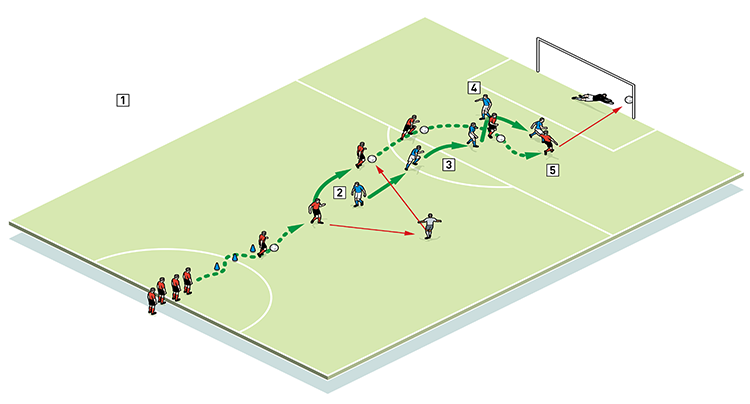
2. ... but becomes active and can retreat once the attacker moves past him
3. The second defender recovers, pushing the attacker wide
4. In this instance, the striker tricks his way around the defender and scores
5. The first defender drops off to cover the goal
How would you put this into a game situation?
We can put this into a simple 5v5 small-sided game in a 60x50-yard area. The game is two-touch in the defensive half and ‘all in’ in the attacking half. Look for players to apply the principles learnt in the main session (4).
4
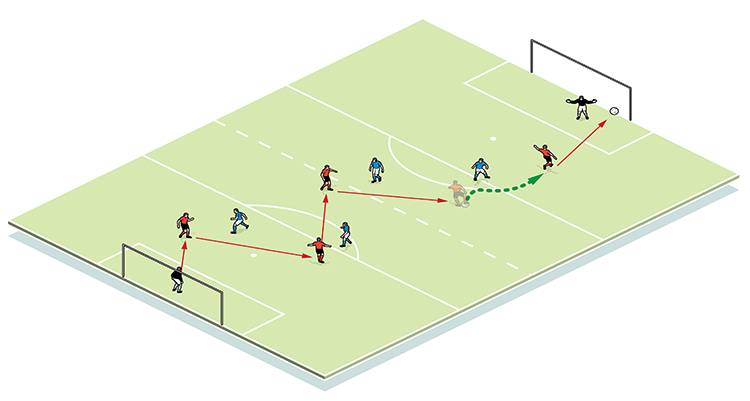
Related Files
Editor's Picks
Attacking transitions
Deep runs in the final third
Using the goalkeeper in build-up play
Intensive boxes drill with goals
Penetrating the final third
Creating and finishing
My philosophy
Pressing initiation
Compact team movement
Coaches' Testimonials

Alan Pardew

Arsène Wenger

Brendan Rodgers

Carlos Carvalhal

José Mourinho

Jürgen Klopp

Pep Guardiola

Roy Hodgson

Sir Alex Ferguson

Steven Gerrard
Related
Pre-season fitness plan
Free-kick routines
Coaches' Testimonials

Gerald Kearney, Downtown Las Vegas Soccer Club

Paul Butler, Florida, USA

Rick Shields, Springboro, USA

Tony Green, Pierrefonds Titans, Quebec, Canada
Join the world's leading coaches and managers and discover for yourself one of the best kept secrets in coaching. No other training tool on the planet is written or read by the calibre of names you’ll find in Elite Soccer.
In a recent survey 92% of subscribers said Elite Soccer makes them more confident, 89% said it makes them a more effective coach and 91% said it makes them more inspired.
Get Monthly Inspiration
All the latest techniques and approaches
Since 2010 Elite Soccer has given subscribers exclusive insight into the training ground practices of the world’s best coaches. Published in partnership with the League Managers Association we have unparalleled access to the leading lights in the English leagues, as well as a host of international managers.
Elite Soccer exclusively features sessions written by the coaches themselves. There are no observed sessions and no sessions “in the style of”, just first-hand advice delivered direct to you from the coach.
